What can you do at home to go green?
Kickstarting a new, more sustainable lifestyle doesn’t have to be a chore. Here are some easy ways to go green at home.
1. Use eco-friendly house cleaning products.

Look at the cleaning supplies in your home, and make changes wherever you see fit. DIY cleaners with simple, safe ingredients like vinegar, baking soda and lemon juice with essential oils can work well in many cases. Some companies make green cleaning supplies, so research a few alternatives before you shop for new products.
And when you hire a house cleaning service, ask them about their products. Many professionals can clean your home with environmentally friendly cleaners at your request.
2. Upgrade to energy-efficient appliances.
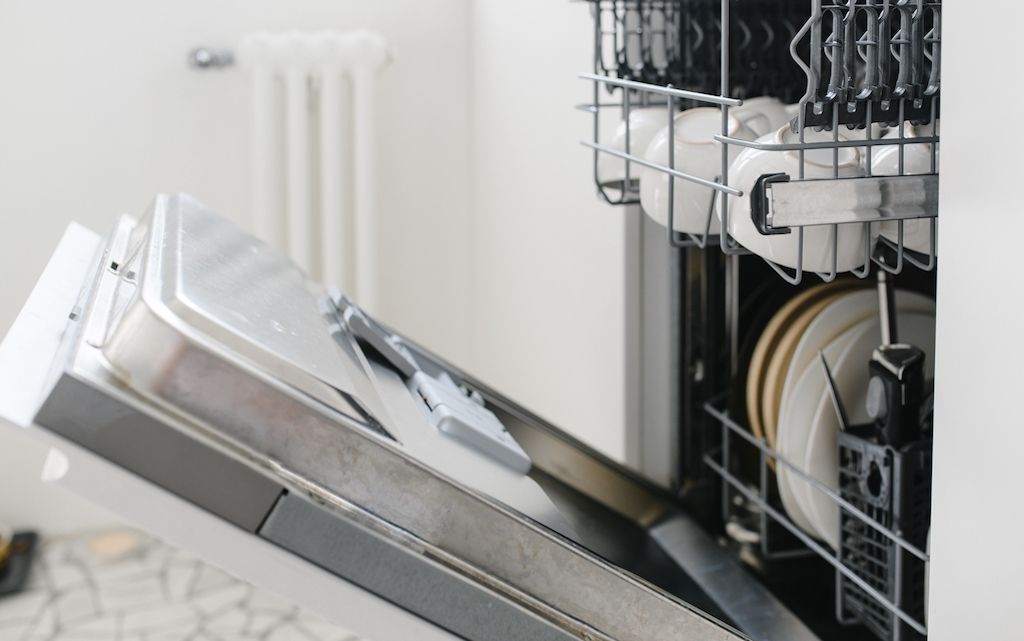 Sustainable homes often have the newest appliances that are Energy Star-certified in order to conserve resources. Energy-saving appliances can lower your energy bills and add value to your home. Here are a few tips to keep in mind for your major appliances.
Sustainable homes often have the newest appliances that are Energy Star-certified in order to conserve resources. Energy-saving appliances can lower your energy bills and add value to your home. Here are a few tips to keep in mind for your major appliances.
Dishwasher.
When a dishwasher is running on its most efficient settings, it can help you save more water than washing dishes by hand. An Energy Star dishwasher uses only three gallons per load — far less than the 27 gallons you use if you wash dishes in the sink, according to the Natural Resource Defense Council.
Refrigerator.
Switching to an Energy Star fridge can potentially save you $200 or more over its 12-year lifespan. If you can’t get a new fridge right now, perform some basic maintenance to make sure you’re not wasting energy. Check your seals, and replace them if necessary. You can also adjust the temperature settings so that the fridge is 35-38 degrees.
Related: Maintenance tips to make your appliances last.
Water heater.
Consider replacing your standard natural gas tank water heater with a tankless and on-demand water heater. You could potentially save 30% of energy, according to the CDC.
*Pro tip: You can hire an inspector to perform a home energy audit or assessment. During this audit, a professional will explain how much energy you’re using (and losing) and suggest ways to make your home more efficient.
3. Insulate and weatherproof your home.
 You can conserve energy, lower your energy bills and prevent air leaks by sealing and insulating your home. Before the warmest and coldest months hit, make sure there aren’t any gaps or cracks in your windows, doors etc. If you have any weak spots, look into caulking and weather stripping services.
You can conserve energy, lower your energy bills and prevent air leaks by sealing and insulating your home. Before the warmest and coldest months hit, make sure there aren’t any gaps or cracks in your windows, doors etc. If you have any weak spots, look into caulking and weather stripping services.
You should also ask an insulation contractor to inspect your home and identify any areas that need insulation.
Related: How much does spray foam insulation cost?
4. Choose eco-friendly materials for your home improvement projects.

Completing a home remodeling project is a great way to add more value to your home, make it attractive to potential buyers and increase your own enjoyment.
However, do your research when choosing certain materials and finishes (wood, paint, etc.). Consider eco-friendly materials from renewable sources, and find out if there are any recyclable, reusable or biodegradable options. There are often recycled content options available for carpet, ceiling tiles, flooring, roof systems, paint and more.
Here are a few more general tips to keep in mind:
- Windows: Opt for high-performance windows instead of standard ones.
- Paint: Select paints that comply with the Green Seal standard and have minimal VOC emissions.
- Wood products: Choose wood that’s been certified by the Forest Stewardship Council, which indicates the wood came from a responsibly managed forest.
- Roof system: When updating your roof system, choose light colors instead of dark ones. Light colors can reflect heat, save energy and reduce your heating and cooling usage.
Of course, the material’s quality and cost should also be important factors when making your decision. But if your goal is to adopt a sustainable lifestyle, find out how the materials (and the way they’re produced) impact the environment. You can find more information from the Department of Energy.
5. Recycle your junk and electronics.

Recycling is another eco-friendly habit you should adopt to make your home more sustainable. Make it a point to recycle plastics, papers, metals and even your electronics. This includes laptops, TVs, printers, phones etc.
So if you’re decluttering your home and planning to throw away a lot of items, first find out if there are any e-waste recycling services near you.
Did you know? Electronics that are thrown away (instead of recycled) can end up in landfills. They also can also leak toxins into the soil and air, according to the CDC.
6. Use recycled paper products.
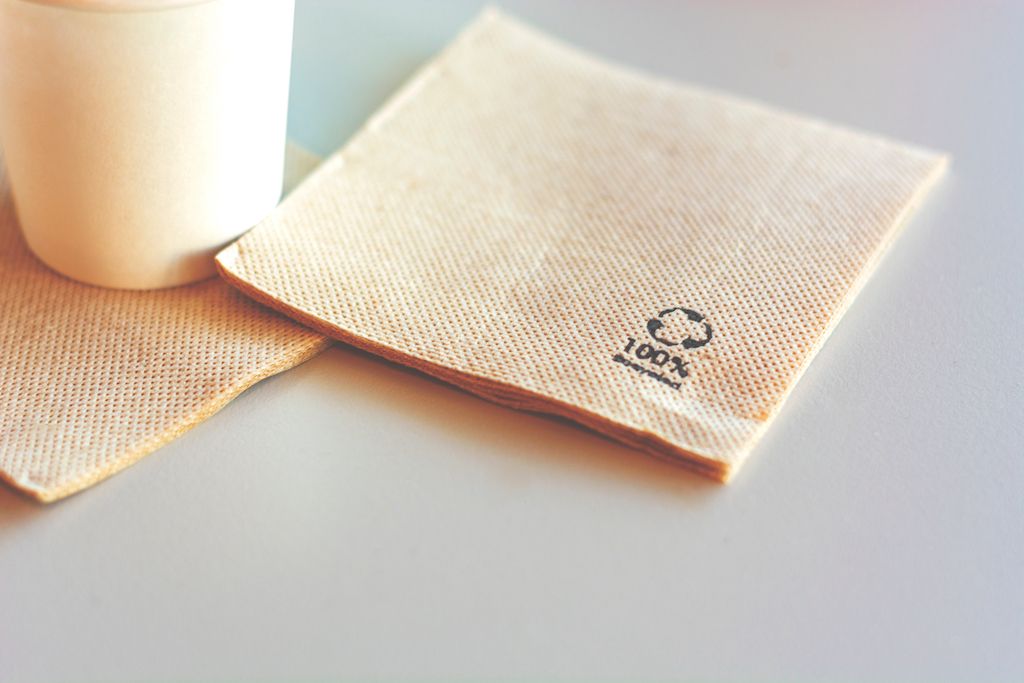 In addition to recycling, you can also use recycled paper products, like paper towels and napkins. This can make a big difference in preserving resources. Paper products are a huge source of deforestation and waste. In fact, “paper and paperboard products made up the largest percentage of all the materials in MSW [Municipal Solid Waste], at 23.1 percent of total generation” in 2018, according to the EPA.
In addition to recycling, you can also use recycled paper products, like paper towels and napkins. This can make a big difference in preserving resources. Paper products are a huge source of deforestation and waste. In fact, “paper and paperboard products made up the largest percentage of all the materials in MSW [Municipal Solid Waste], at 23.1 percent of total generation” in 2018, according to the EPA.
The next time you’re out shopping, the CDC recommends purchasing green products that contain “30% or greater post-consumer recycled content.”
7. Find creative ways to reuse items (instead of throwing them away).
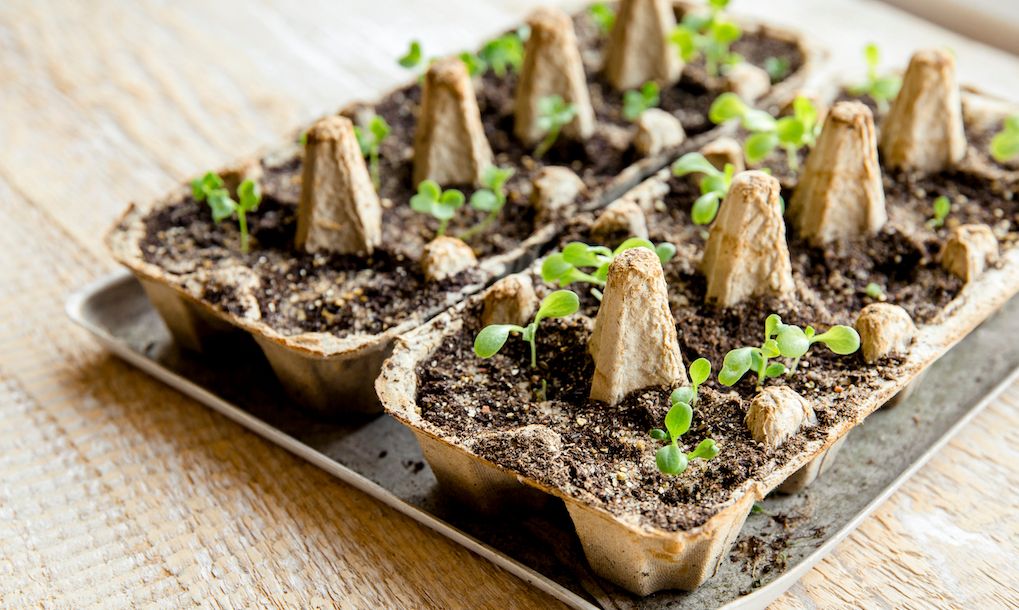 Feeling crafty? If you have something that can be reused, try it. Fill an empty pickle jar with spare change on your desk to encourage healthy spending and save some money for a rainy day. Reuse containers such as egg cartons to start seeds in the springtime. The possibilities are endless — and fun.
Feeling crafty? If you have something that can be reused, try it. Fill an empty pickle jar with spare change on your desk to encourage healthy spending and save some money for a rainy day. Reuse containers such as egg cartons to start seeds in the springtime. The possibilities are endless — and fun.
8. Limit how much plastic you use.
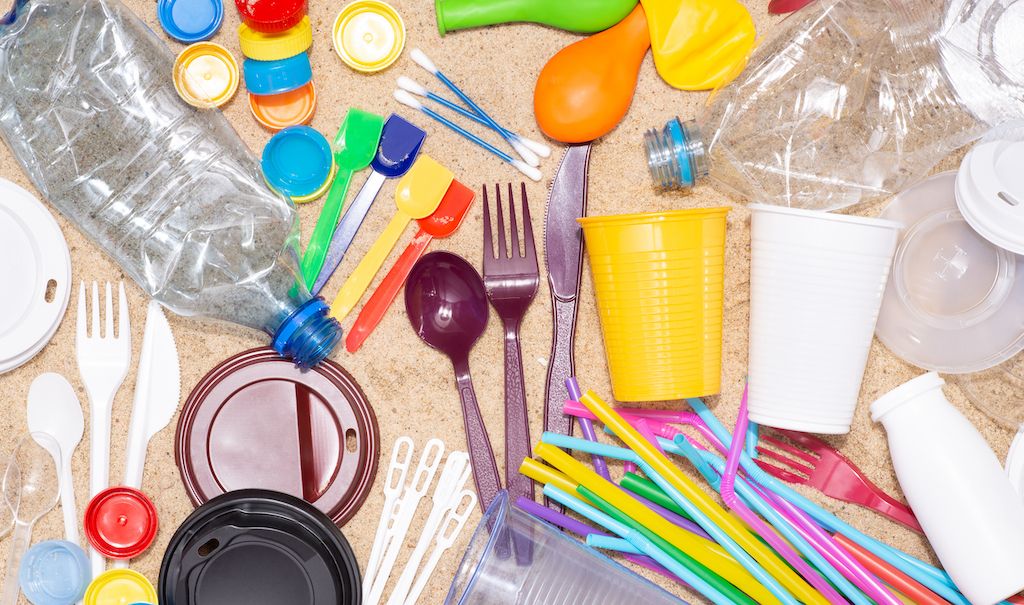 Limiting your consumption and use of plastic products is a crucial part of green living. Single-use plastics (water bottles, straws, bags, utensils etc.) are a huge burden to the oceans and landfills around the world.
Limiting your consumption and use of plastic products is a crucial part of green living. Single-use plastics (water bottles, straws, bags, utensils etc.) are a huge burden to the oceans and landfills around the world.
Here are some ways you can cut back on using plastic:
- Cook more instead of ordering in — and when you do order in, don’t request utensils.
- Buy and use reusable items — such as grocery bags, straws and food containers.
- Shop in bulk — and avoid buying individually packaged goods.
- Don’t buy bottled water — instead, invest in a water filter.
9. Replace your bathroom fixtures.
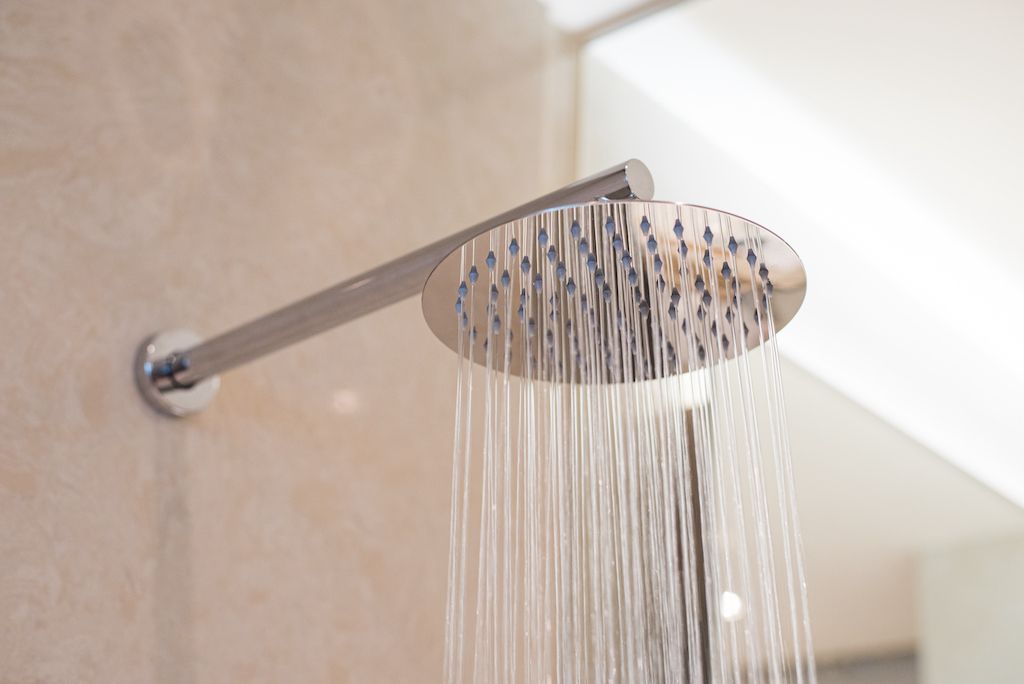 Consider replacing your bathroom fixtures with more eco-friendly options to save water. For example, start with replacing your faucets and showerheads with aerating and low-flow versions with the WaterSense label, recommends the CDC.
Consider replacing your bathroom fixtures with more eco-friendly options to save water. For example, start with replacing your faucets and showerheads with aerating and low-flow versions with the WaterSense label, recommends the CDC.
Another idea: stop taking hour-long showers. Your standard showerhead uses about 2.5 gallons of water per minute, so limiting time in the shower is a good way to be more sustainable at home.
Related: 10 bathroom design trends to soak up this year.
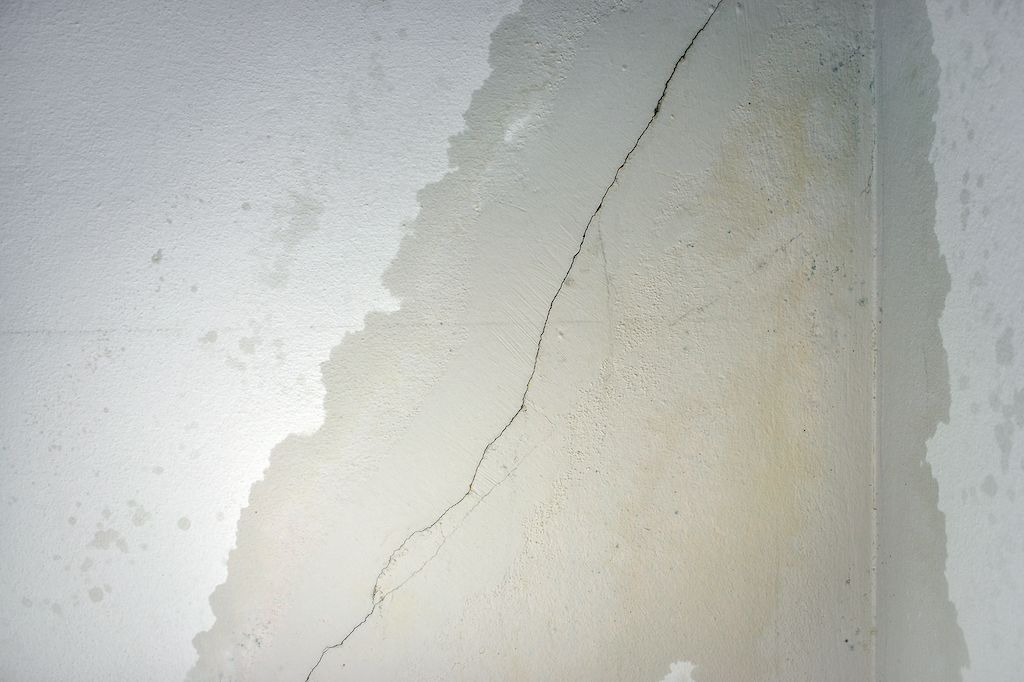 We can’t restate this enough. Never neglect a leak, no matter how minor you think it might be. Whether it’s located under your sink or in your walls, you should always address a leak as soon as you notice it. Otherwise, you could be wasting gallons of water every day. Not to mention that you will risk severe water damage, which could cost you a small fortune in repairs.
We can’t restate this enough. Never neglect a leak, no matter how minor you think it might be. Whether it’s located under your sink or in your walls, you should always address a leak as soon as you notice it. Otherwise, you could be wasting gallons of water every day. Not to mention that you will risk severe water damage, which could cost you a small fortune in repairs.
Related: How much does it cost to fix a leaking pipe?
11. Compost at home to reduce waste.
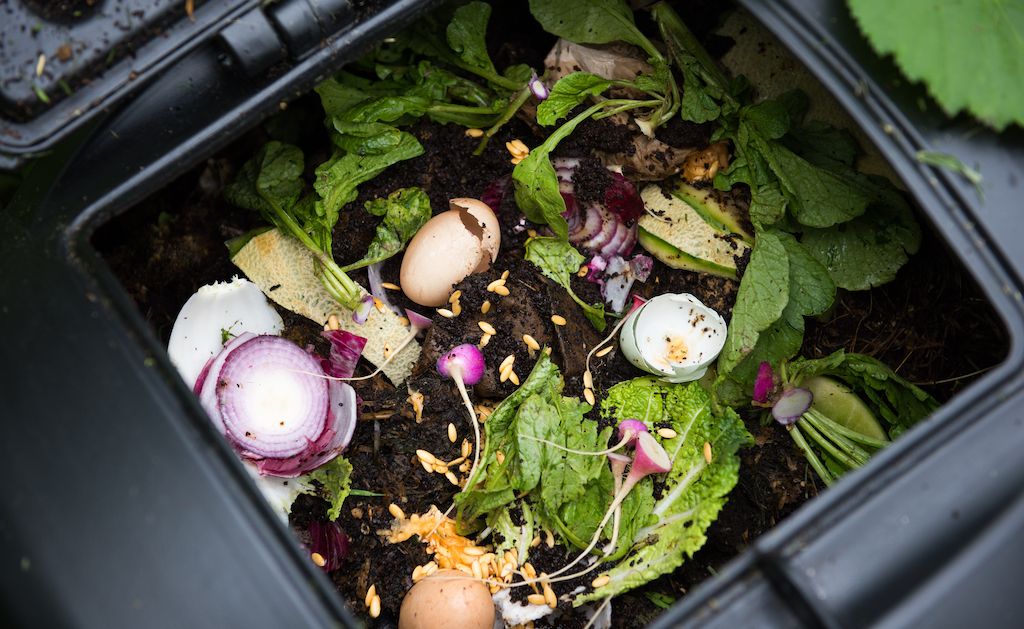 Food waste accounts for up to 30-40% of the food supply, according to the Food and Drug Administration. While making sure not to buy too much food is the first step, you can also start a compost pile. Composting ensures the waste won’t end up in landfills. Other benefits of composting include richer soil that you can then put back into your yard — plus fewer methane emissions from landfills.
Food waste accounts for up to 30-40% of the food supply, according to the Food and Drug Administration. While making sure not to buy too much food is the first step, you can also start a compost pile. Composting ensures the waste won’t end up in landfills. Other benefits of composting include richer soil that you can then put back into your yard — plus fewer methane emissions from landfills.
Reduce waste by creating a compost pile in your backyard or inside your home. The EPA provides tips and ideas on how to do both.
12. Start a garden.
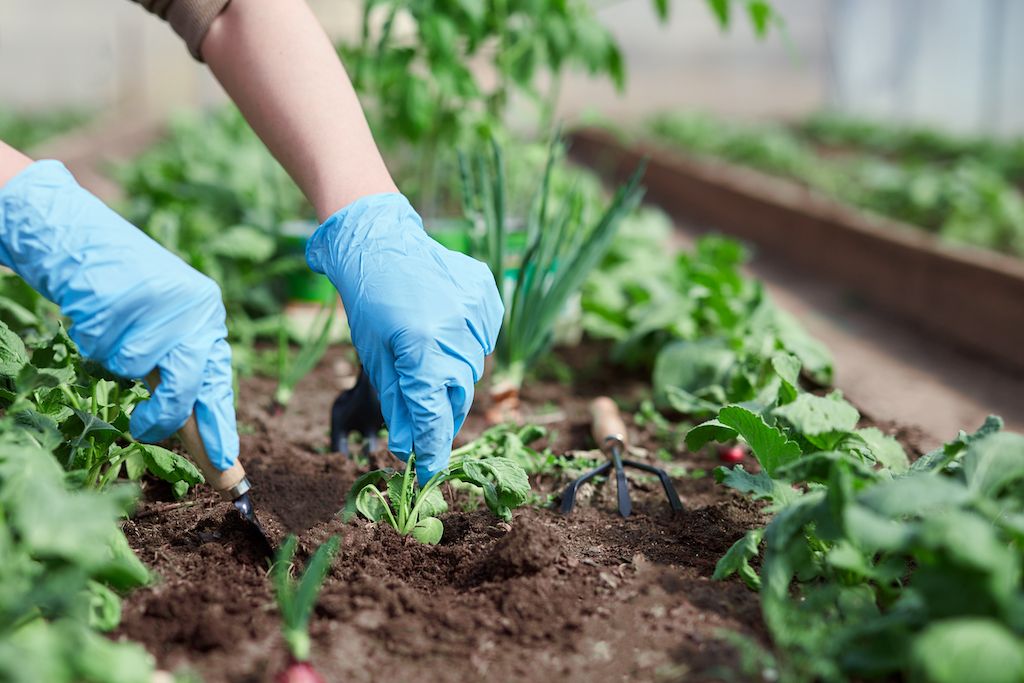 A simple backyard garden is a fun way to spend time with your family. It’s also one of the best ways to go greener. You can grow your own vegetables, fruits, herbs, flowers and more. When selecting plants for your garden or yard, search for ones that are low-maintenance and don’t require too much water.
A simple backyard garden is a fun way to spend time with your family. It’s also one of the best ways to go greener. You can grow your own vegetables, fruits, herbs, flowers and more. When selecting plants for your garden or yard, search for ones that are low-maintenance and don’t require too much water.
Related: How much does a gardener cost?
13. Use mulch.
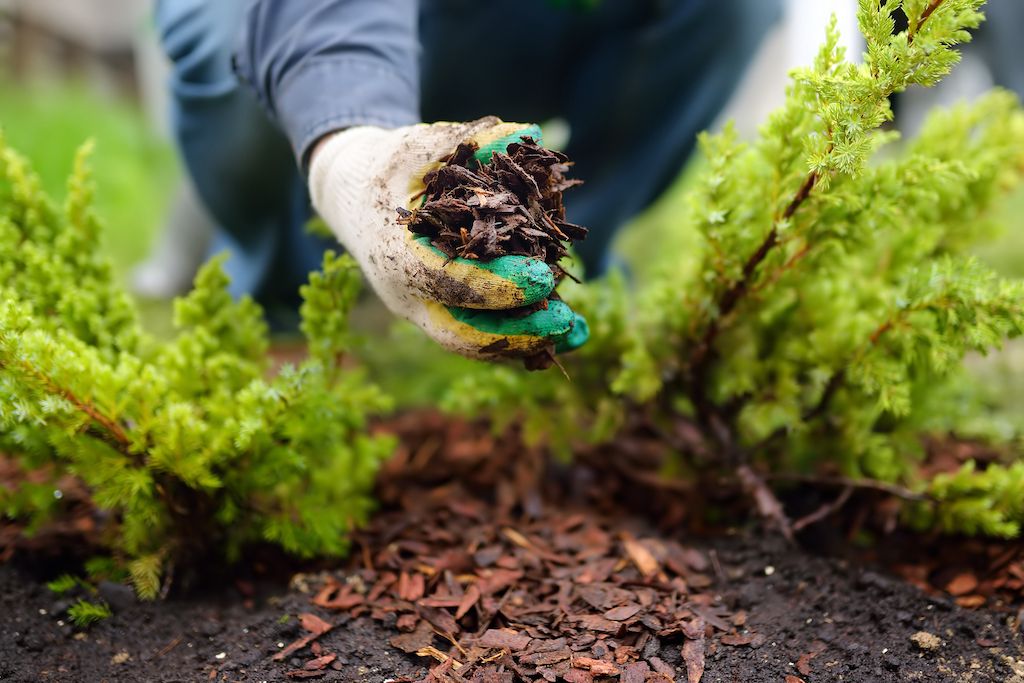 One way to have environmentally friendly landscaping is to apply mulch (an organic matter consisting of leaves, grass clippings, wood chips or compost) to your plants’ roots, including flower beds, vegetables, lawns, trees and shrubs. Mulch helps your soil retain its moisture, which can help you conserve water usage. It also promotes healthy plant growth.
One way to have environmentally friendly landscaping is to apply mulch (an organic matter consisting of leaves, grass clippings, wood chips or compost) to your plants’ roots, including flower beds, vegetables, lawns, trees and shrubs. Mulch helps your soil retain its moisture, which can help you conserve water usage. It also promotes healthy plant growth.
Related: How much are mulching services?
14. Be smart when watering your lawn.
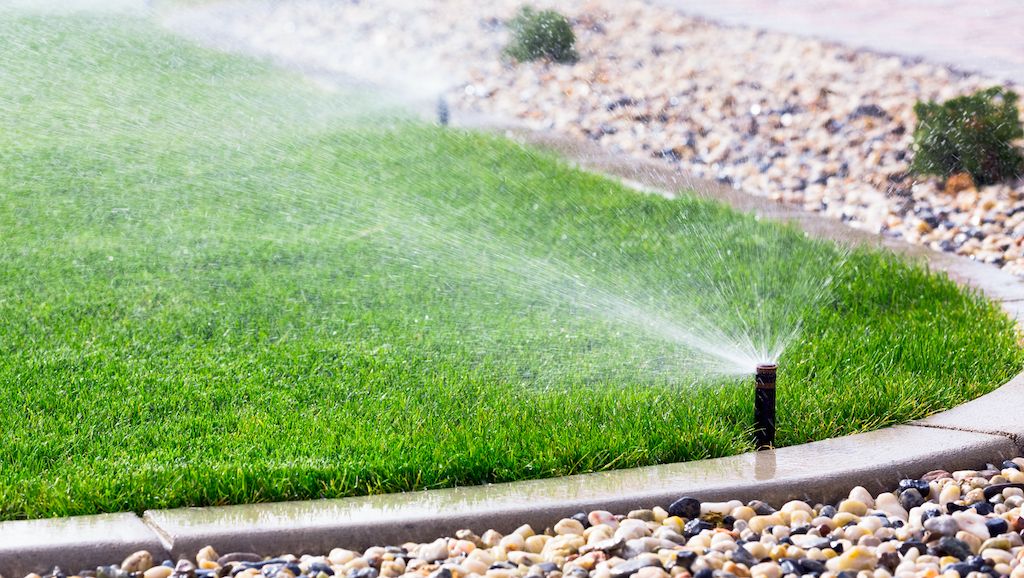 If you have a lawn, get the most out of every drop of water by watering your lawn separately from your other plants. The EPA also recommends watering early in the morning, when the water is less likely to evaporate.
If you have a lawn, get the most out of every drop of water by watering your lawn separately from your other plants. The EPA also recommends watering early in the morning, when the water is less likely to evaporate.
Inspect your sprinkler and irrigation system regularly. Double-check the sprinkler heads’ placement to ensure water isn't being wasted on your pavement and outdoor structures. And don’t forget to put your sprinklers on a timer.
Related: 12 spring lawn care tips for a beautiful lawn all year long.
*Pro tip: Drip irrigation systems are known to help you save water because “very little is lost to evaporation and the water can be directed only to the plants that need it, cutting back on water waste,” according to the United States Geological Survey.
15. Don’t overwater your houseplants.

Not only is overwatering a waste, but it can also harm your indoor plants. Instead, err on the side of caution and let the soil dry out a little between waterings. If your houseplants are wilting, go ahead and water them.
Even better? Choose low-water plants, like snake plants, pothos, cast-iron plants, aloe and other succulents.
Related: Plant care 101 — how to grow strong and healthy plants.
16. Plant a few trees in your yard.
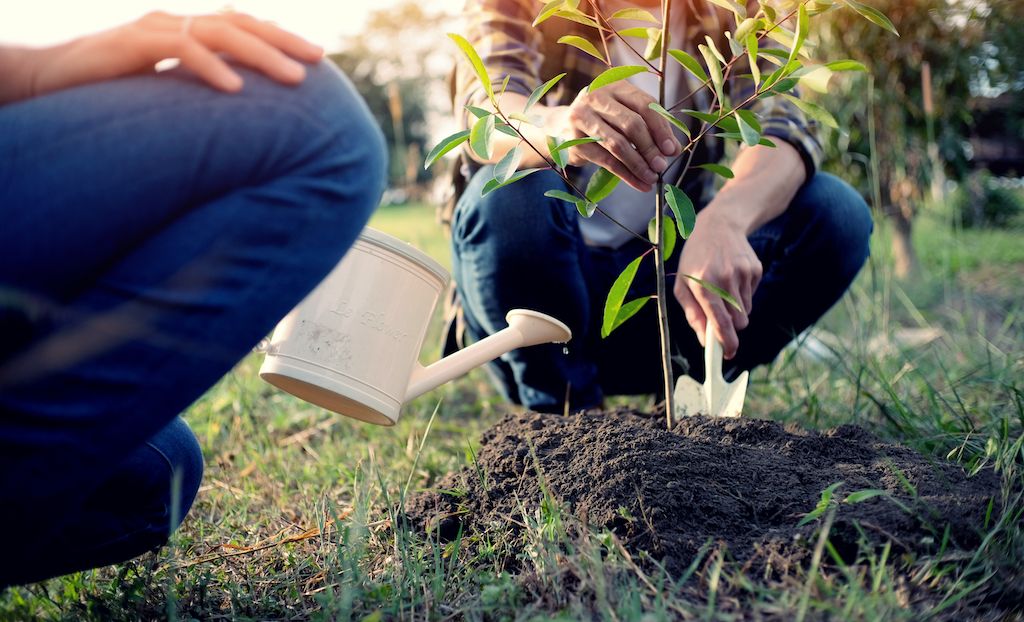 You may want to consider planting native trees in your yard. Trees provide plenty of environmental benefits, including keeping the air clean (trees can help reduce greenhouse gasses) and conserving energy. For example, planting a large shade tree can help keep your home cool, which means you could save energy and lower your energy bill.
You may want to consider planting native trees in your yard. Trees provide plenty of environmental benefits, including keeping the air clean (trees can help reduce greenhouse gasses) and conserving energy. For example, planting a large shade tree can help keep your home cool, which means you could save energy and lower your energy bill.
Related: How much does tree planting cost?
17. Choose native plants when landscaping.
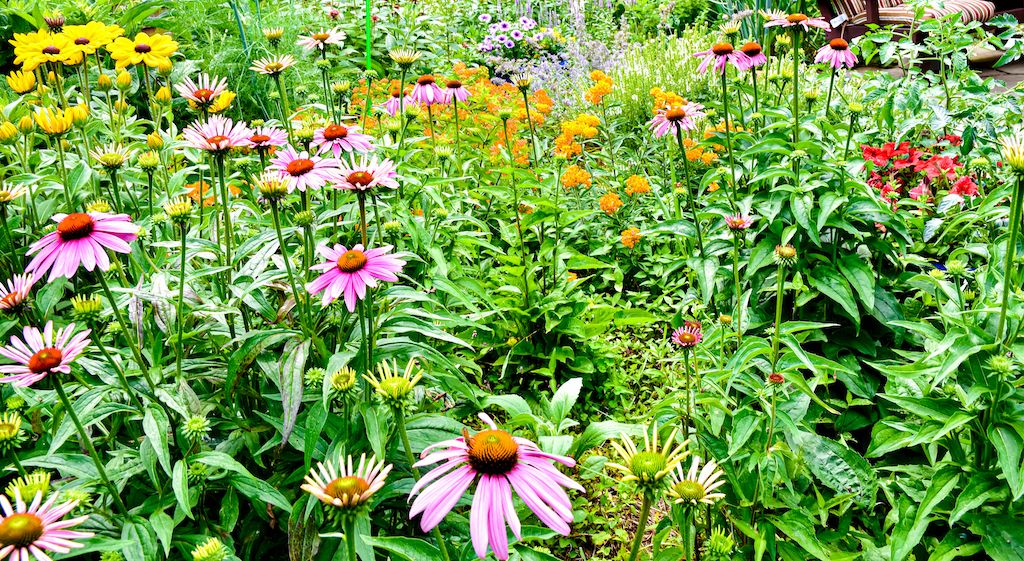 You can help support a fragile ecosystem by planting native plants. Native plants provide a natural food source and shelter for birds, insects and other animals. They require minimum upkeep because they’re accustomed to the terrain, climate and soil. Plus, native plants can help reduce water runoff and air pollution.
You can help support a fragile ecosystem by planting native plants. Native plants provide a natural food source and shelter for birds, insects and other animals. They require minimum upkeep because they’re accustomed to the terrain, climate and soil. Plus, native plants can help reduce water runoff and air pollution.
Visit your nursery, or ask a landscaper or gardener about their recommendations for native plants.
18. Create a safe haven for pollinators.
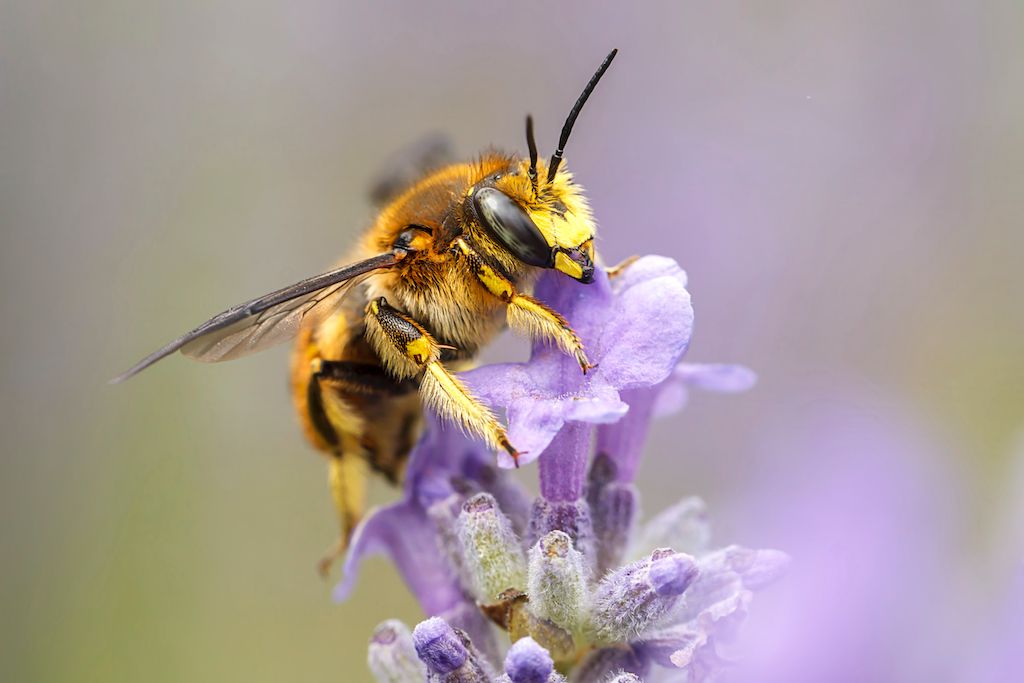 Birds, bees, flies, moths, butterflies and other wildlife transfer pollen from plant to plant. The process is called pollination, and it’s a vital part of our ecosystem. Pollinators help produce food and crops, stabilize soil and clean the air.
Birds, bees, flies, moths, butterflies and other wildlife transfer pollen from plant to plant. The process is called pollination, and it’s a vital part of our ecosystem. Pollinators help produce food and crops, stabilize soil and clean the air.
You can provide a home for pollinators by choosing the right plants to grow. For example, consider growing dogwoods, willows or blueberries, recommends the USDA. You should also create a nice mixture of different plants and flowers so you can attract various pollinators.
19. Limit the use of chemical pesticides.
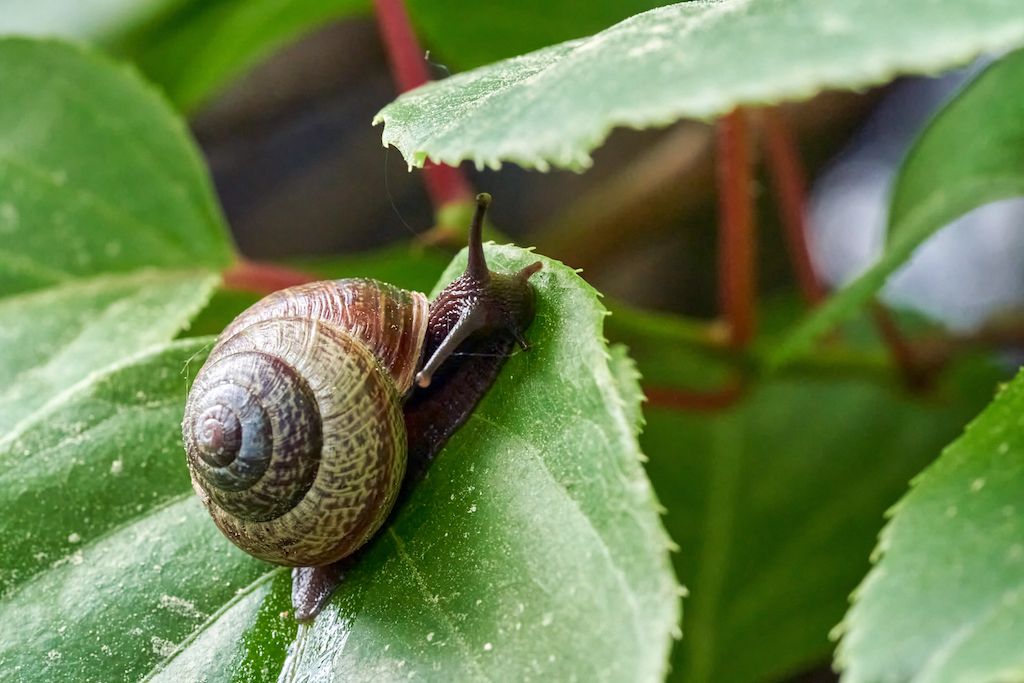
Before you reach for a chemical pesticide to get rid of pests in or outside your home, consider other pest management options, such as:
- Using non-chemical pest control. This can include setting traps, using certain vinegars and opting to handpick weeds — instead of spraying them.
- Maintaining a healthy lawn and garden. The healthier your plants, the stronger they are to resist pests.
- Eliminating pests’ food and water resources. This means you should clean up spills and crumbs in your house, keep your food tightly sealed and ensure that your trash can is covered.
- Sealing cracks and holes around your home. Rodents, ants, cockroaches and other pests love hiding in tight, dark areas. Seal them up.
If you must utilize chemical pesticides, read the directions carefully. Incorrect usage can harm the environment and wildlife. When in doubt, talk to a pro who offers eco pest control services and carefully selected products.
20. Regularly inspect and maintain your home.
 Home maintenance isn’t always fun, but it’s the key to going green at home. By regularly inspecting, cleaning and performing repairs around the house, you’ll find opportunities to be more environmentally friendly and conserve energy.
Home maintenance isn’t always fun, but it’s the key to going green at home. By regularly inspecting, cleaning and performing repairs around the house, you’ll find opportunities to be more environmentally friendly and conserve energy.
For example, when you complete important maintenance tasks before summer hits, you might discover you need to seal your home, repair your AC or heating unit — or even upgrade your roofing system to avoid wasting energy. All of these tasks can help you become more energy-efficient and protect the environment.
Thumbtack pros can make your home greener.
Reach out to our professionals on Thumbtack to help you create a greener, more sustainable home. Search for home remodeling and maintenance experts today.
FAQs
What’s the difference between sustainable living and going green?
It’s important to understand that going green is different from sustainable living. “To pursue sustainability is to create and maintain the conditions under which humans and nature can exist in productive harmony to support present and future generations,” states the EPA.
Meanwhile, going green sometimes only refers to the eco-friendly products we use and buy (think: appliances, clothing, etc.). However, some products that are deemed "green" might not be truly sustainable because of how they're produced and made. So if your mission is to live sustainably, take the time to do your research.

 You can conserve energy, lower your energy bills and prevent air leaks by
You can conserve energy, lower your energy bills and prevent air leaks by 


 Home maintenance isn’t always fun, but it’s the key to going green at home. By regularly inspecting, cleaning and performing repairs around the house, you’ll find opportunities to be more environmentally friendly and conserve energy.
Home maintenance isn’t always fun, but it’s the key to going green at home. By regularly inspecting, cleaning and performing repairs around the house, you’ll find opportunities to be more environmentally friendly and conserve energy.